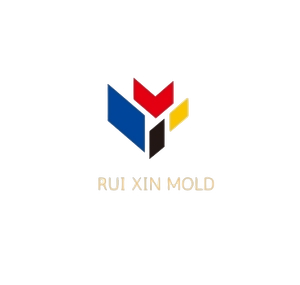Catalog
Tags
TL;DR
Electrical Discharge Machining (EDM) uses controlled electrical sparks to shape conductive materials. The three main types are Sinker EDM for creating 3D cavities, Wire EDM for intricate 2D cuts, and Hole Drilling EDM for fast, small holes. EDM is prized for its high precision on hard metals and its ability to create complex shapes that are impossible for traditional machining, making it essential for the mold, aerospace, and medical industries.
The Working Principle: How EDM Shapes Metal
Electrical Discharge Machining is a non-contact, thermal-based process. It works by generating a rapid series of electrical discharges (sparks) between a tool (the electrode) and a workpiece, both submerged in a dielectric fluid. This process erodes the material without any physical force.
- An intense electrical field is created between the electrode and the workpiece, which are separated by a tiny gap.
- This field breaks down the dielectric fluid, creating a super-heated plasma channel—a spark.
- The spark's intense heat (thousands of degrees Celsius) melts and vaporizes a microscopic amount of material from the workpiece.
- The dielectric fluid then flushes away the vaporized metal particles (swarf) and cools the surface.
This cycle repeats thousands of times per second, precisely removing material to form the final shape without inducing stress into the part.
The 3 Types of EDM: A Detailed Comparison
Each type of EDM is designed for a specific purpose, offering unique capabilities in terms of shape, precision, and application.
| EDM Type | Definition & Process | Typical Tolerances | Primary Applications |
|---|---|---|---|
| Sinker EDM (Ram EDM) | A custom-shaped electrode (the "tool") is plunged or "sunk" into a workpiece, creating a 3D cavity that is the mirror image of the electrode. It excels at creating complex, blind cavities. | ±0.001" (±0.025 mm) | Injection molds, dies, complex cavities, features with sharp internal corners, and creating textures. |
| Wire EDM | A thin, continuously moving conductive wire acts as the electrode, following a precisely programmed path to create intricate 2D cuts through the full thickness of a part. | ±0.0001" (±0.0025 mm) | Cutting hardened tool steel, creating punch and die sets, gears, intricate slots, and medical devices. |
| Hole Drilling EDM | A specialized, high-speed process that uses a rotating, tube-shaped electrode to quickly drill small, deep, and precise holes in conductive materials, regardless of their hardness. | ±0.001" (±0.025 mm) | Drilling cooling channels in molds, creating starter holes for Wire EDM, and machining fuel injector nozzles. |
Conductive Materials Suitable for EDM
- Hardened Tool Steels (A2, D2, H13)
- Stainless Steel & Titanium
- Inconel & Other Superalloys
- Carbide & Tungsten
- Aluminum, Copper & Brass
Benefits and Ideal Scenarios
EDM's unique capabilities provide significant advantages in specific manufacturing situations.
- ✅ Machining Hard Materials: EDM's primary benefit is its ability to effortlessly shape materials like hardened steel or titanium that would be difficult or impossible for traditional mills.
- ✅ Complex & Intricate Geometries: It can create sharp internal corners, deep ribs, and thin walls that are beyond the scope of conventional cutting tools.
- ✅ No Mechanical Stress: As a non-contact process, it induces no stress, preventing distortion in delicate, thin-walled, or fragile parts.
- ✅ Exceptional Precision & Finish: EDM can achieve very tight tolerances and produce a fine surface finish, often eliminating the need for secondary polishing.
Applicable Scenarios: EDM is the go-to choice for high-precision tooling, creating molds and dies, manufacturing mission-critical aerospace and medical parts, and prototyping complex components from hard metals.
Real-World Applications
- Mold & Die Manufacturing: A company creating plastic injection molds would use Sinker EDM to machine the intricate, hardened steel cavities that form the final product's shape.
- Aerospace Industry: Aerospace manufacturers use Wire EDM to precisely cut turbine disk slots from Inconel and Hole Drilling EDM to create microscopic cooling holes in turbine blades.
- Medical Device Production: Medical companies rely on the precision of Wire EDM to manufacture surgical instruments and complex implants, like coronary stents, from titanium and stainless steel.
Frequently Asked Questions (FAQ)
Q1: Can EDM work on any material?
No, EDM only works on electrically conductive materials. It cannot be used for plastics, ceramics, or composites.
Q2: Which EDM type is the most accurate?
Wire EDM typically offers the highest level of accuracy and can achieve the tightest tolerances, often down to a few microns (±0.0001").
Q3: Is EDM a fast machining process?
No, EDM is generally slower than conventional CNC milling. Its value lies in its precision and ability to handle hard materials and complex shapes, not its speed.
Bring High-Precision to Your Next Project
Whether you need intricate molds, high-tolerance tooling, or complex aerospace parts, EDM offers capabilities beyond traditional machining. Contact our team to see how we can apply this technology to your project.
Need Precision CNC Machining for Your Mold Components?
We specialize in custom CNC machining of mold inserts, slide cores, ejector plates, mold bases, and lifters
all made to your exact drawings and specifications.
👉 Let’s Build Your Next Project Together!
Tell us your needs and upload your drawings — we’ll get back within 24 hours.
